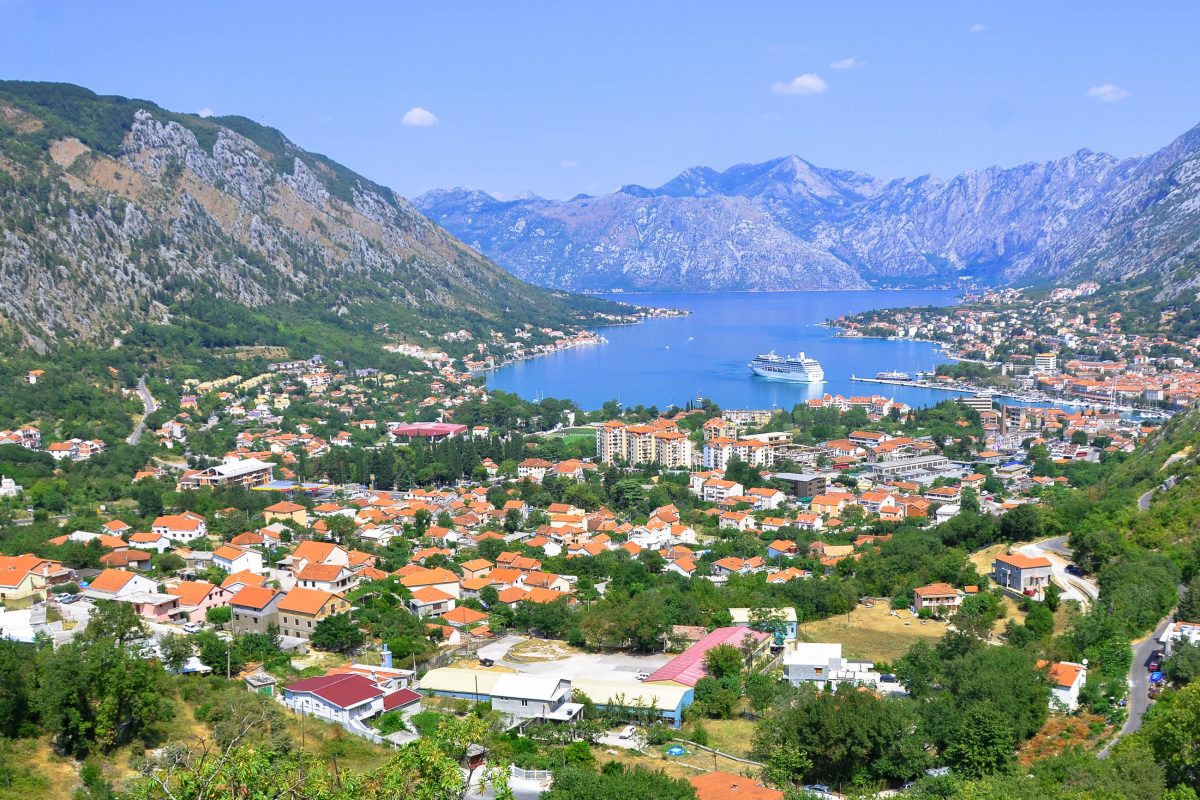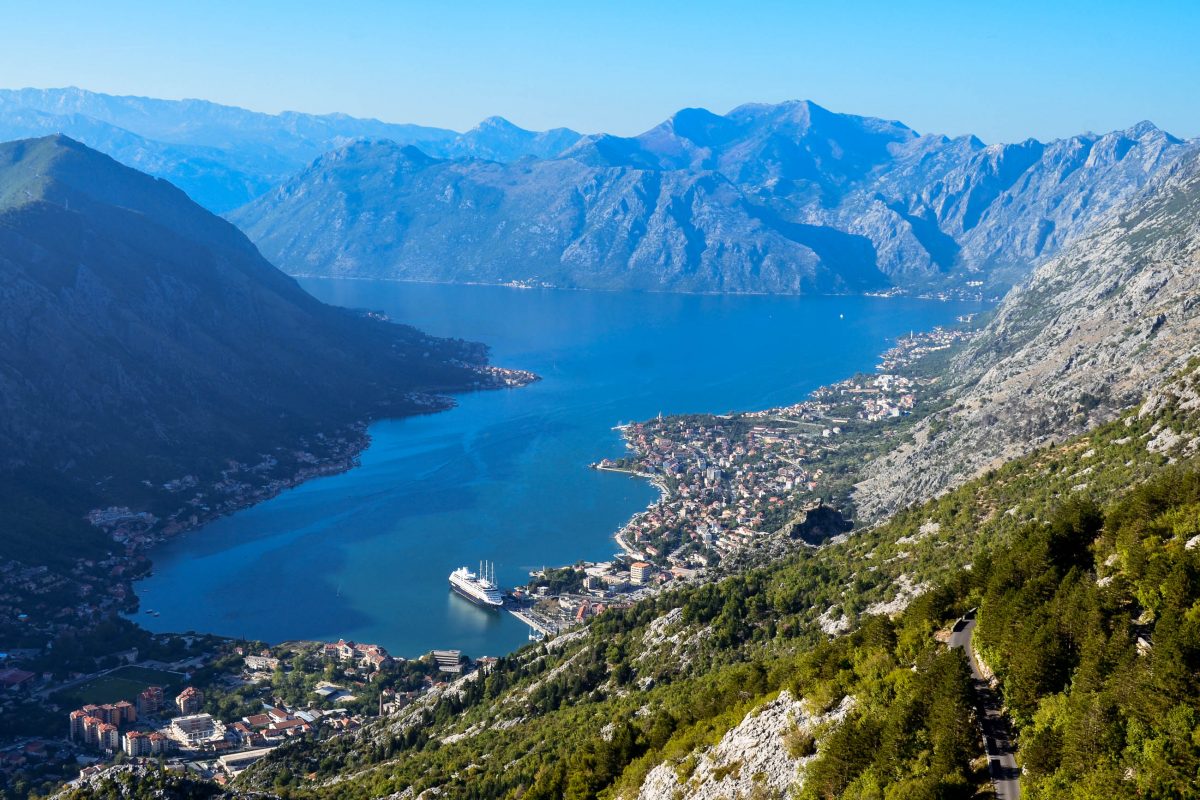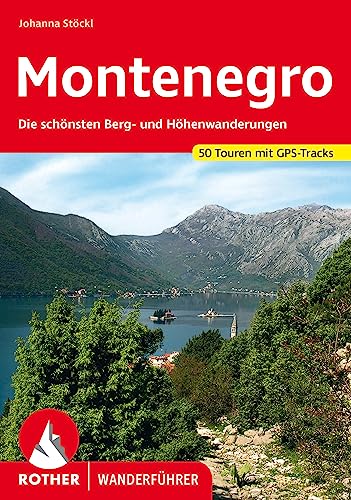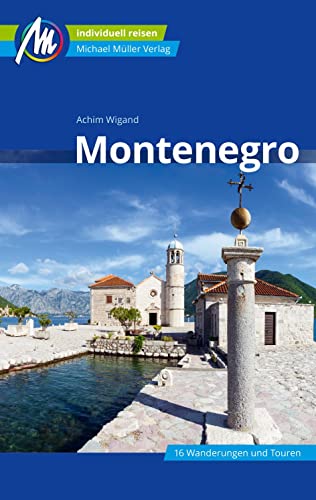MONTENEGRO

Das kleine Balkanland Montenegro gilt noch als Geheimtipp unter den Urlaubsländern Europas – aber wohl nicht mehr lange. Mit seinen Stränden und Seen, UNESCO-Welterbe-Städten und der tiefsten Schlucht Europas gleicht es einer kompakten aber vielfältigen Schatzkiste an Sehenswürdigkeiten und Urlaubs-Aktivitäten.
Montenegro, das überschaubare Land am Mittelmeer, gestaltet sich ebenso interessant wie sein populärer Nachbar Kroatien – nur für kleineres Urlaubsbudget und mit weniger Touristen. Als Urlaubsziel präsentiert sich Montenegro als Land der Gegensätze. Es überrascht Reisende mit seiner enormen Vielfalt an Möglichkeiten. Erholung am Strand, Wandern in den Bergen und Wäldern, Rafting über wilde Stromschnellen, oder Kultururlaub in UNESCO-Welterbe-Stätten – im Land des „Schwarzen Berges“ ist alles möglich:
- In den eindrucksvollen Nationalparks Lovcen und Durmitor locken das höchste Mausoleum und die tiefste Schlucht Europas.
- In der Bucht von Kotor malerische Ausblicke auf den südlichsten Fjord Europas und das gleichnamige UNESCO-Welterbe-Städtchen.
- Am malerischen Skadar-See erzählen uralte Klöster von vergangenen Zeiten.
Je nach Art des Urlaubs in Montenegro kann die beste Reisezeit für Montenegro das ganze Jahr über liegen. Für Badeurlaub eignen sich natürlich die Sommermonate am besten, allerdings sind die Strände am Mittelmeer dann auch ziemlich voll.
Für Wanderurlaub in Montenegro oder Rundreisen sind die Monate Mai bis Oktober zu empfehlen und für Wintersport (vor allem bei Zabljak im Durmitor-Gebirge) liegt von Dezember bis März mit Sicherheit genug Schnee.
Klima & Wetter
Einreise & Visum
Zahlen, Daten, Fakten
Wanderurlaub in Montenegro
Reiseführer & Karten
Wie kommt man nach Montenegro?

Von Mitteleuropa reist man am besten mit dem Flugzeug an. Montenegros internationale Flughäfen befinden sich in der Hauptstadt Podgorica und in der Hafenstadt Tivat. Natürlich ist aber auch die Einreise mit dem eigenen Auto möglich. Die Fahrt von Wien in die Küstenstadt Budva dauert etwa 12 Stunden. In die Bucht von Kotor laufen regelmäßig Kreuzfahrtschiffe ein. Und die Anreise mit der eigenen Yacht ist natürlich eine Option.
Sobald man in Montenegro gelandet ist, nimmt man idealerweise einen Mietwagen (außer man ist mit dem eigenen PKW angereist). Mit dem Auto lässt sich dieses vielfältige Land wunderbar erkunden. Allrad-Antrieb ist nur auf manchen Trails in den Bergen von Vorteil, die meisten Sehenswürdigkeiten Montenegros sind völlig unkompliziert auf asphaltierten Straßen zu erreichen.
Beste Reisezeit für Montenegro
Das Klima in Montenegro ist kontinental. Die Temperaturen sind ähnlich wie in Mitteleuropa, durch die südlichere Lage jedoch stets etwas höher.
An den Küstengebieten locken heiße, trockene Sommer zum Bade-Urlaub, während es im Gebirge schön kühl für Wanderungen bleibt. Für Rundreisen bieten sich die Monate Mai bis Oktober an.
Von Dezember bis März fällt reichlich Schnee im Gebirge. Beste Bedingungen also für Skiurlaub in Montenegro, zum Beispiel im Wintersportort Žabljak im Durmitor-Massiv.
Wo ist es in Montenegro am schönsten?
Schwer zu sagen! Montenegro zeigt trotz seiner relative kleinen Fläche von rund 14.000 Quadratkilometern viele Gesichter. Wo die besten Reiseziele zu finden sind, hängt von den jeweiligen Interessen ab. Egal, welche Art von Urlaub geplant ist, in Montenegro findet jeder den passenden Ort dafür!
- Baden am Strand? Kommt nach Budva, Bar oder Herceg Novi!
- Wandern in den Bergen? Im Durmitor-Gebirge, im Prokletije-Massiv oder im Lovcen Nationalpark geht es hoch hinaus.
- Unberührte Natur genießen? Am besten in den Urwäldern des Biogradska Gora Nationalparks.
- Auf den Spuren historischer Klöster wandeln? Befahrt die Klosterroute rund um den riesigen Skadarsee oder besucht das Felsenkloster Ostrog voller Wunder!
- Kultur und Nachtleben genießen? Geht nirgendwo besser als in Budva, Cetinje oder Podgorica.
- UNESCO Welterbe entdecken? Dann seid ihr in der malerischen Bucht von Kotor richtig.
Aktivitäten in Montenegro
Entdecken Sie Montenegro, ein Juwel am Balkan, das mit atemberaubender Natur und vielfältigen Aktivitäten lockt.
Ob Aktivurlauber, Kulturliebhaber oder Strandliebhaber – Montenegro bietet jedem etwas. Lassen Sie sich von der montenegrinischen Gastfreundschaft verzaubern und erleben Sie unvergessliche Momente in diesem einzigartigen Land.
Rafting in Montenegro

Viele Abenteurer kommen nur zum Rafting nach Montenegro, denn in der Tara-Schlucht finden sie perfekte Bedingungen für einen wilden Ritt im Schlauchboot. Kenner titulieren die Tara als einen der besten Rafting-Spots Europas.
Je nach Jahreszeit ist der längste Fluss Montenegros für Wildwasser-Anfänger und -Profis geeignet. Die abenteuerlichen Touren dauern von wenigen Stunden bis zu mehreren Tagen und garantieren die absolut besten Eindrücke von Europas Grand Canyon!
Badeurlaub in Montenegro
Wer in Montenegro einen Urlaub am Strand plant, reist am besten von Juni bis September an und genießt das typisch mediterrane Klima an der Adria. Im Juli und August herrscht Hochsaison, dann sind die Preise am höchsten und die Strände entlang der knapp 300 Kilometer langen Küste am besten besucht.
Budvas Strände sind alle bestens erschlossen und bieten perfekte Voraussetzungen für einen erholsamen Badetag am Meer. Bar ist die größte Küstenstadt Montenegros und beeindruckt mit einem riesengroßen Frachthafen. Das für eine Hafenstadt sehr saubere Bar lädt mit dem Strand bei Šušanj zum Schwimmen und Planschen ein. Weitere Strände liegen in den Nachbarorten Sutomore und Canj. Als Eingangstor zur wunderbaren Bucht von Kotor bietet das charmante Herceg Novi bereits einen Vorgeschmack auf die Schönheit, die sich dahinter verbirgt. Rund um Herceg Novi liegen einige zauberhafte Badeorte, die mit Cafés, Pizzerien und Eisdielen das typische Flair von Strandurlaub verströmen.
Unterkünfte und Hotels in Montenegro
- Hotels und Unterkünfte: Übersicht Montenegro
- Hotels und Unterkünfte: Bar
- Hotels und Unterkünfte: Budva
- Hotels und Unterkünfte: Kotor
- Hotels und Unterkünfte: Herceg Novi
- Hotels und Unterkünfte: Podgorica
- Hotels und Unterkünfte: Zabljak
- Hotels und Unterkünfte: Cetinje
- Hotels und Unterkünfte: Adria Küste
- Hotels und Unterkünfte: Durmitor National Park
- Hotels und Unterkünfte: Biogradska Gora Nationalpark
- Hotels und Unterkünfte: Lovcen Nationalpark
- Hotels und Unterkünfte: Nationalpark Skadarsko Jezero
Kultur-Urlaub in Montenegro
Montenegro steht in erster Linie für Strand, Meer und Natur. Und doch gibt es Orte, an denen historische Bauten, interessante Museen oder steinerne Überreste von der bewegten Vergangenheit Montenegros erzählen.
Das geschichtsträchtige Podgorica ist die Hauptstadt von Montenegro. Cetinje war einst königliche Hauptstadt und gilt immer noch als Kulturhauptstadt Montenegros. Am Fuß des Lovcen gelegen beherbergt die Stadt den offiziellen Sitz des montenegrinischen Präsidenten. Die UNESCO-Welterbe-Stadt Kotor liegt ganz am Ende der gleichnamigen Bucht, die zu den schönsten Orten an der Adria zählt.




